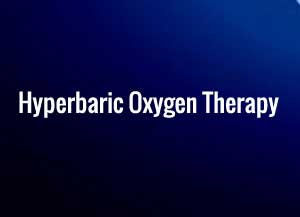- Home
- Editorial
- News
- Practice Guidelines
- Anesthesiology Guidelines
- Cancer Guidelines
- Cardiac Sciences Guidelines
- Critical Care Guidelines
- Dentistry Guidelines
- Dermatology Guidelines
- Diabetes and Endo Guidelines
- Diagnostics Guidelines
- ENT Guidelines
- Featured Practice Guidelines
- Gastroenterology Guidelines
- Geriatrics Guidelines
- Medicine Guidelines
- Nephrology Guidelines
- Neurosciences Guidelines
- Obs and Gynae Guidelines
- Ophthalmology Guidelines
- Orthopaedics Guidelines
- Paediatrics Guidelines
- Psychiatry Guidelines
- Pulmonology Guidelines
- Radiology Guidelines
- Surgery Guidelines
- Urology Guidelines
Medical miracle : US doctors reverse brain damage in drowned toddler

Washington: Doctors in the US have successfully reversed brain damage in a two-year-old who became unresponsive to all stimuli after a drowning accident.
The girl experienced cardiac arrest after a cold water drowning accident in a swimming pool. After resuscitation at Arkansas Children's Hospital in the US, MRI revealed deep brain injury as well as grey and white matter loss.
She had no speech, gait or responsiveness to commands, and was constantly squirming and shaking her head.
Since hyperbaric oxygen therapy was not available in the patient's location, doctors at Louisiana State University Health Sciences Center in the US began a bridging treatment to prevent permanent tissue degeneration until they could get the patient to a hyperbaric treatment center.
Fifty-five days post-drowning, they began short duration treatment with 100 per cent normobaric oxygen for 45 minutes twice a day through a nasal cannula.
The girl became more alert, awake and stopped squirming, doctors said.
Her rate of neurological improvement increased and she started laughing, increased movement of arms, hands, and taking some food orally.
She also showed pre-drowning speech level, but with diminished vocabulary.
The patient and family then traveled to New Orleans 78 days after drowning, where doctors began treating her with hyperbaric oxygen therapy (HBOT).
She "dove" in a hyperbaric chamber for 45 minutes a day, five days a week for 40 sessions.
"At the beginning of each session, the patient showed visually apparent and/or physical examination-documented neurological improvement," doctors said.
"After 10 HBOT sessions, the patient's mother reported that her daughter was "near normal" except for gross motor function, and physical therapy was re-instituted," they said.
After 39 HBOT sessions, the patient exhibited assisted gait, speech level greater than pre-drowning, near normal motor function, normal cognition, improvement on nearly all neurological exam abnormalities, discontinuance of all medications, as well as residual emotional, gait and temperament deficits.
Gait improvement was documented immediately upon returning home.
An MRI at 27 days following HBOT session 40 and 162 days post-drowning demonstrated mild residual injury and near- complete reversal of grey and white matter loss.
The synergy of increased oxygen and increased oxygen with pressure in the hormone-rich environment in a child's growing brain is consistent with the synergy of growth hormones and hyperbaric oxygen caused by normobaric and hyperbaric oxygen- induced activation of genes that reduce inflammation and promote cell survival.
"The startling regrowth of tissue in this case occurred because we were able to intervene early in a growing child, before long-term tissue degeneration," said Paul Harch, Director of Hyperbaric Medicine at LSU Health.
"Such low-risk medical treatment may have a profound effect on recovery of function in similar patients who are neurologically devastated by drowning," said Harch.
The case was reported in the journal Medical Gas Research.

Disclaimer: This site is primarily intended for healthcare professionals. Any content/information on this website does not replace the advice of medical and/or health professionals and should not be construed as medical/diagnostic advice/endorsement or prescription. Use of this site is subject to our terms of use, privacy policy, advertisement policy. © 2020 Minerva Medical Treatment Pvt Ltd